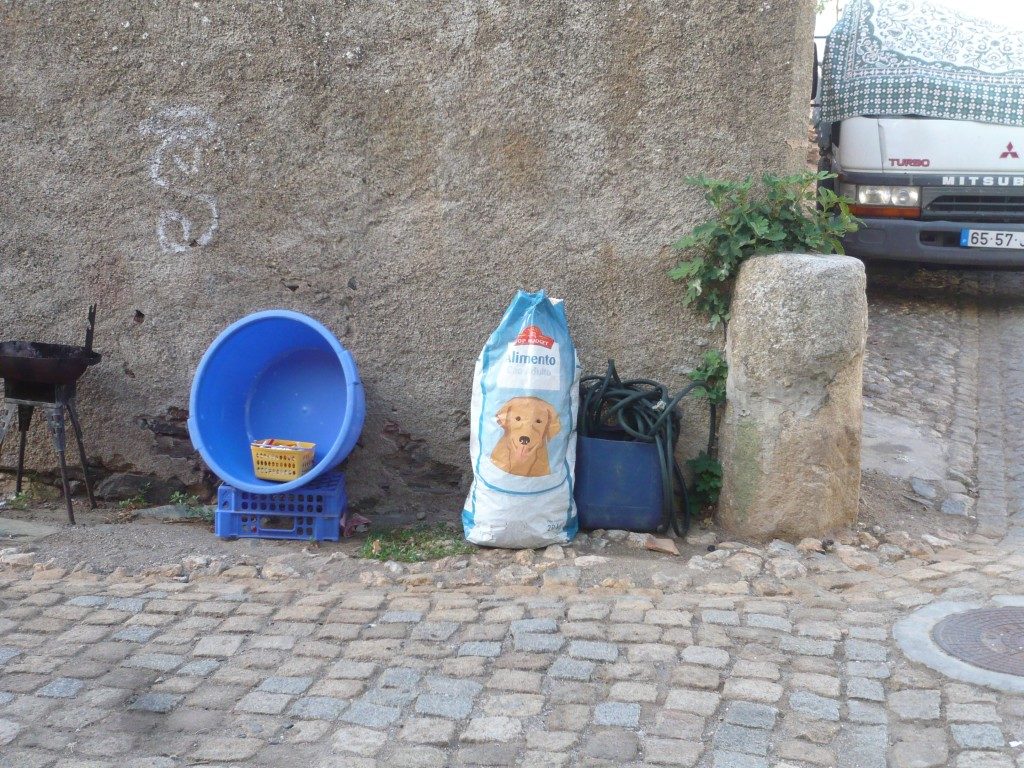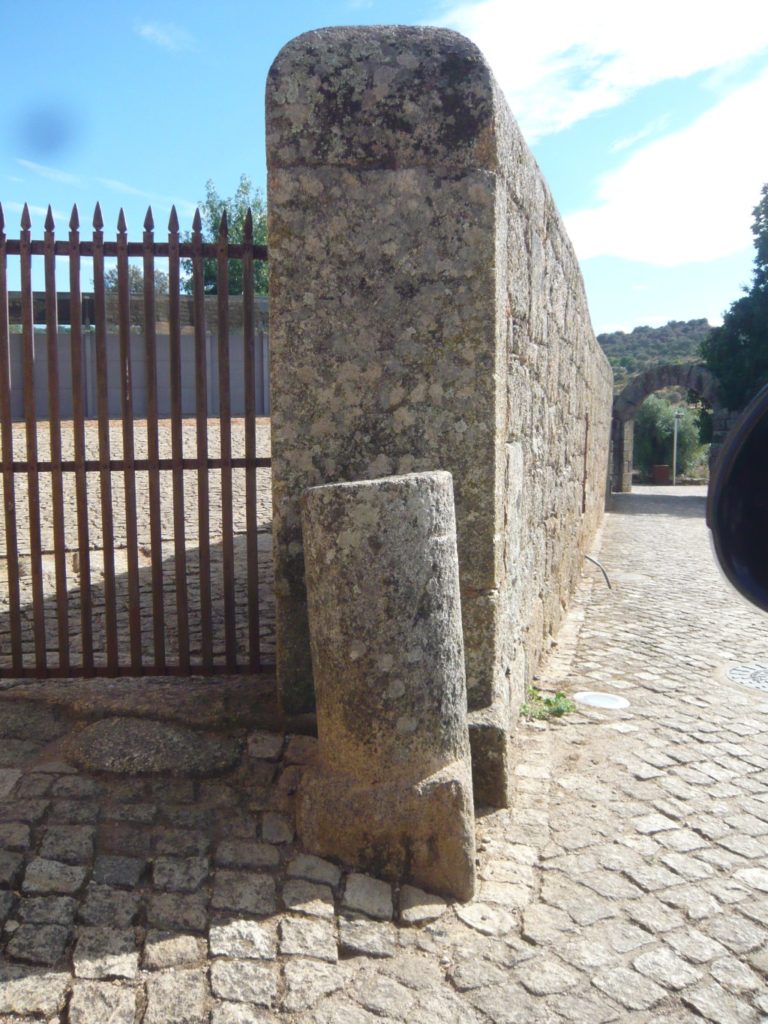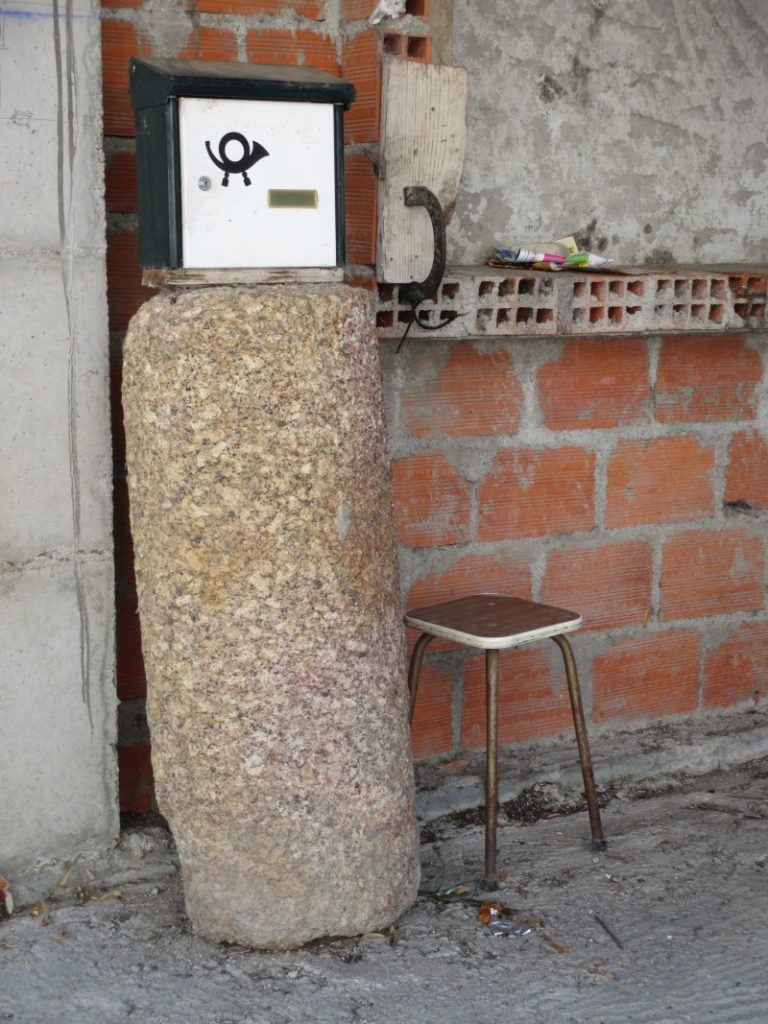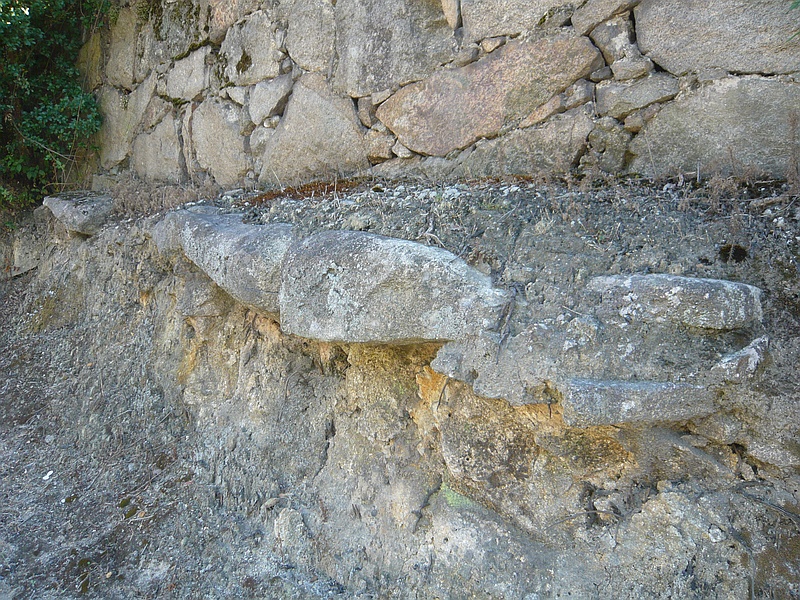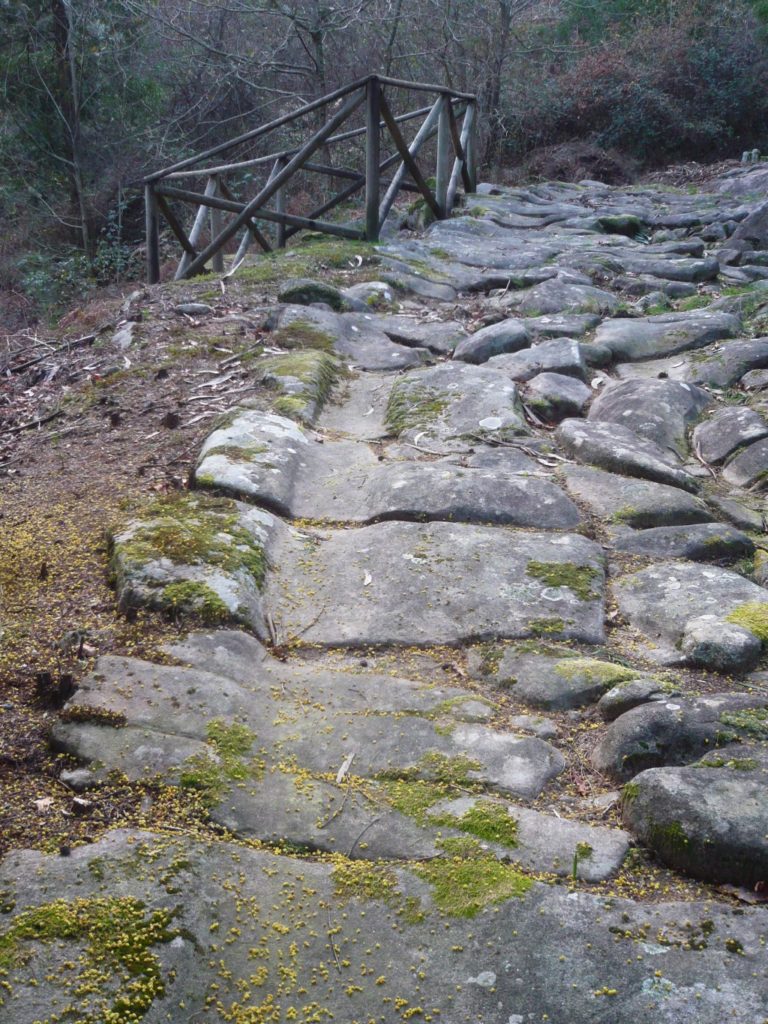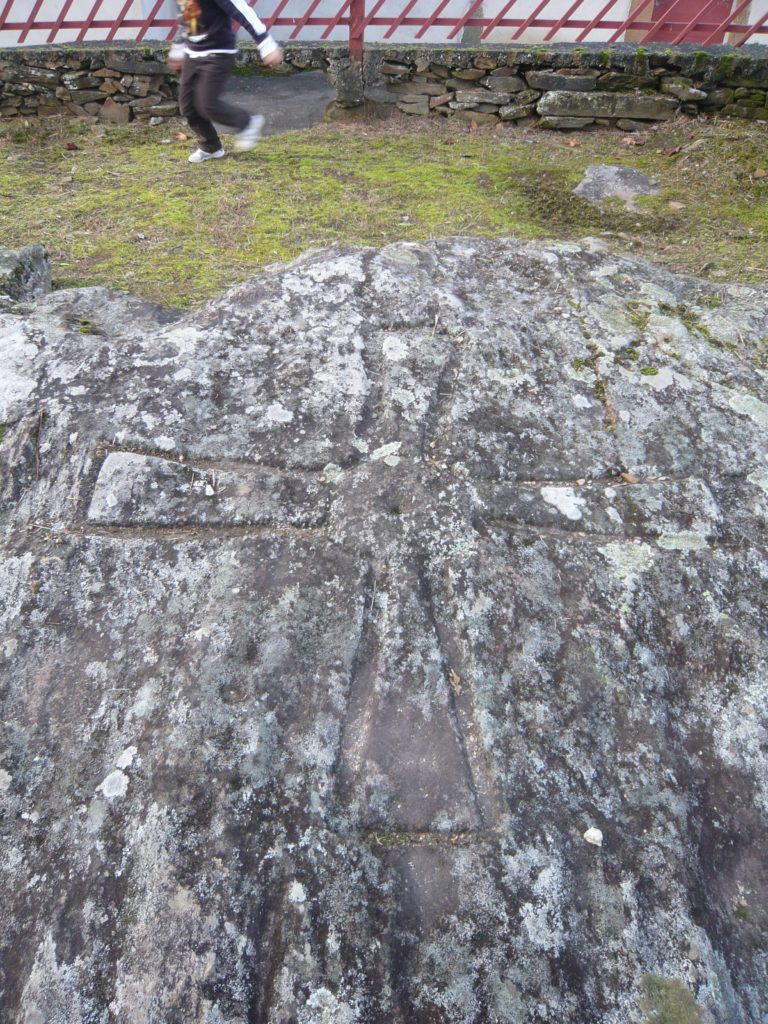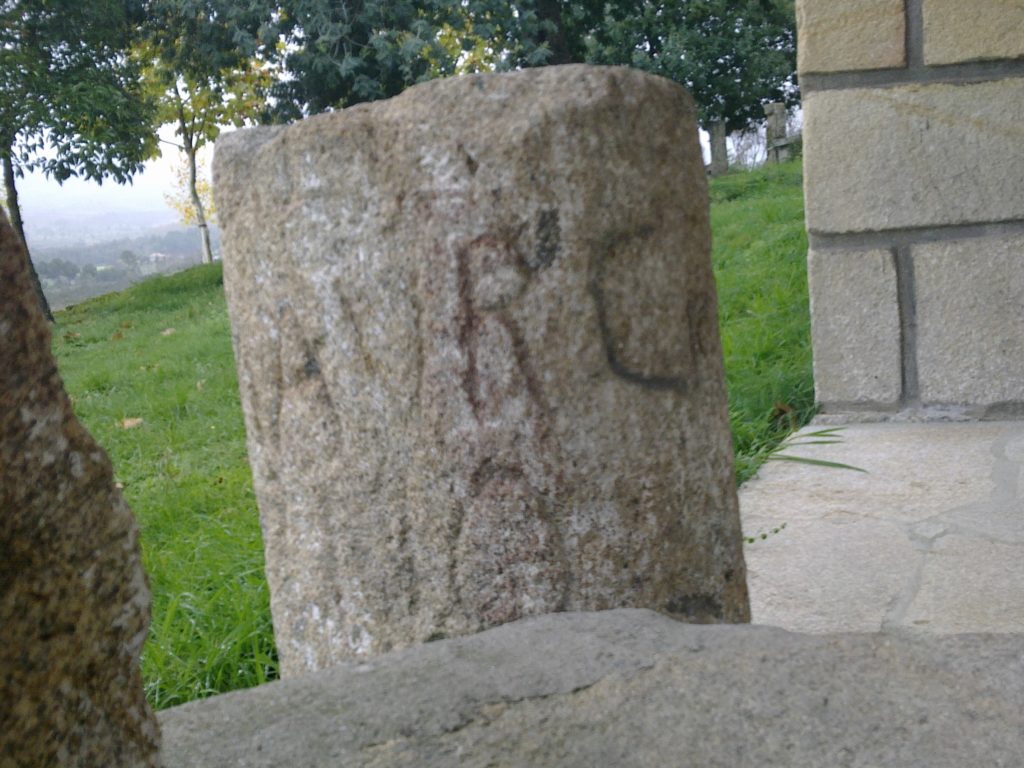
“M(arcus) Aur(elius) Carino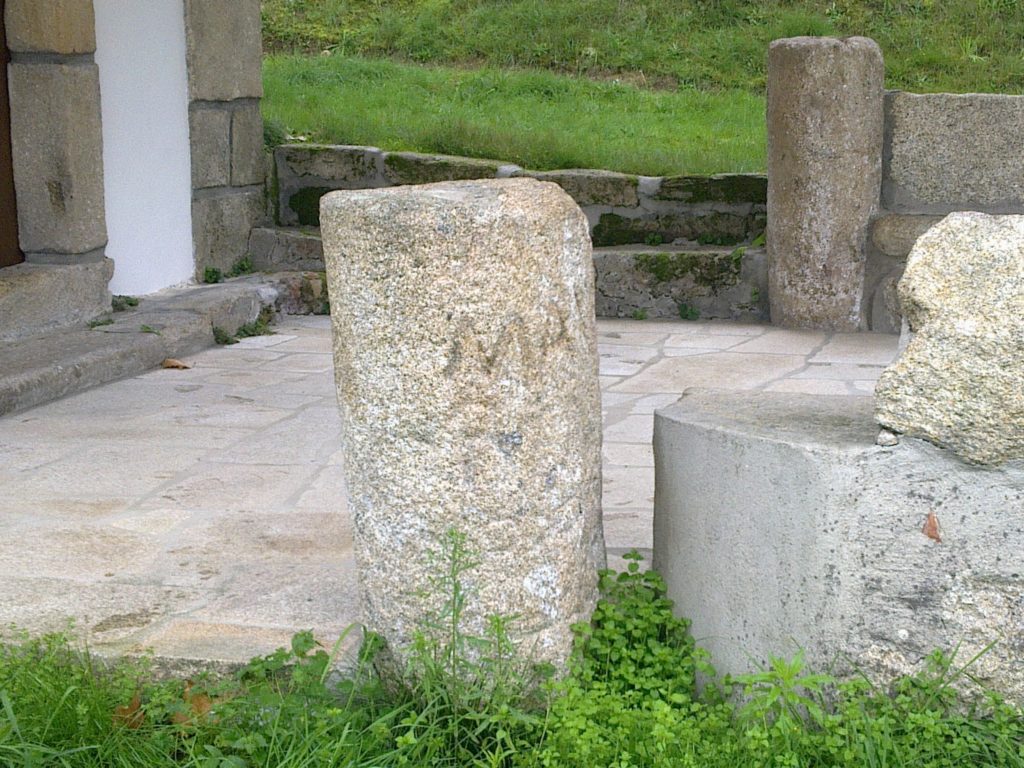
The two fragments

Fragment 1 
Fragment 2
Two fragments of a milestone on yard of the Chapel of Santa Marta in Vila Frade (Chaves), close to the Spanish border. Fragment has no inscription and was probably the lower part of the milestone; Fragment 2 still has vestiges of an inscription dedicated to Marcus Aurelius Carinus that ruled the Empire from 283 to 285 AD. This Roman road coming from Aquae Flaviae (Chaves) continues through Lama de Arcos in the direction of Tameirón where another milestone was found. Coordinates: 41.807986, -7.410070
vide route here – https://viasromanas.pt/#chaves_senabria


